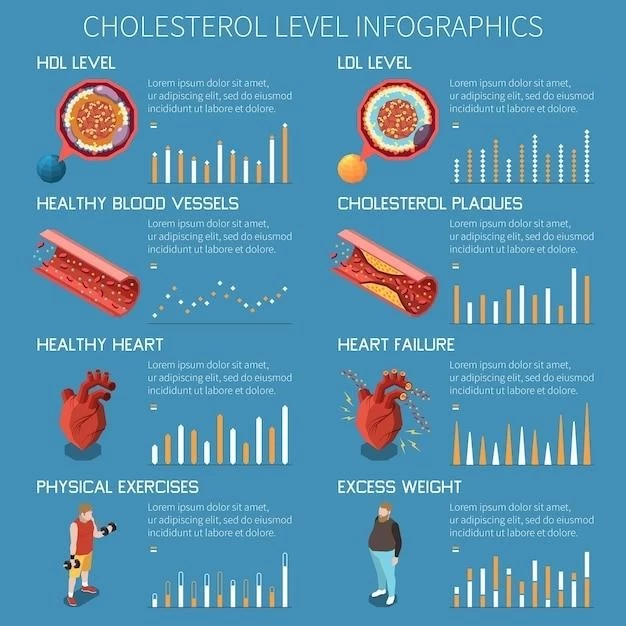Introduction to Occlusive Infantile Arteriopathy
Generalized arterial calcification of infancy (GACI) is a rare genetic disorder characterized by calcium buildup in all blood vessels from birth․ Learn more about GACI here․
Definition and Overview of Occlusive Infantile Arteriopathy
The term ″Occlusive Infantile Arteriopathy″ encompasses various conditions like Generalized Arterial Calcification of Infancy (GACI) and Idiopathic Infantile Arterial Calcification; These conditions involve abnormal calcification and narrowing of blood vessels, potentially leading to severe cardiovascular and neurological complications․ Understanding the genetic and diagnostic aspects of these disorders is crucial for timely intervention and management․
Understanding Generalized Arterial Calcification of Infancy (GACI)
Generalized Arterial Calcification of Infancy (GACI) is a rare genetic disorder characterized by calcium buildup in all blood vessels from birth․ It can lead to severe cardiovascular complications and requires specialized care․ Learn more about GACI and its implications for affected individuals․
Characteristics and Symptoms of GACI
Generalized Arterial Calcification of Infancy (GACI) presents with widespread arterial calcification and narrowing, leading to cardiovascular complications like heart failure, respiratory distress, cyanosis, and hypertension․ Skin and retinal manifestations may also be observed․ Understanding these unique characteristics is crucial for timely diagnosis and management․
Causes and Genetic Factors of Occlusive Infantile Arteriopathy
Occlusive Infantile Arteriopathy, including conditions like Generalized Arterial Calcification of Infancy (GACI), is primarily caused by genetic mutations in genes like ENPP1 and ABCC6․ Understanding these genetic factors is crucial for early detection and intervention to manage the disease effectively․
Role of Genetic Mutations in ENPP1 and ABCC6
Genetic mutations in genes like ENPP1 and ABCC6 play a crucial role in the development of occlusive infantile arteriopathy٫ particularly in conditions such as Generalized Arterial Calcification of Infancy (GACI)․ Understanding these genetic factors is essential for accurate diagnosis and personalized treatment approaches to manage the disease effectively․
Diagnosis and Imaging Techniques for Occlusive Infantile Arteriopathy
Utilizing advanced imaging techniques such as computerized tomography (CT) plays a vital role in accurately diagnosing occlusive infantile arteriopathy․ These imaging tools provide detailed insights into arterial calcification and other associated abnormalities, aiding healthcare providers in developing effective management strategies for affected individuals․ Understanding the use of CT scans in diagnosing the disease is crucial for timely intervention and improved outcomes․
Use of Computerized Tomography (CT) in Diagnosis
Computerized Tomography (CT) imaging plays a crucial role in diagnosing conditions like occlusive infantile arteriopathy, offering detailed insights into arterial calcification and abnormalities․ CT scans enable healthcare professionals to visualize and assess the extent of vascular calcification, aiding in accurate diagnosis and treatment planning for affected individuals․ Understanding the significance of CT scans in diagnosing occlusive infantile arteriopathy is essential for providing timely and effective medical care․
Treatment Options for Occlusive Infantile Arteriopathy
Effective management strategies and therapeutic options are available for individuals diagnosed with occlusive infantile arteriopathy, including conditions like Generalized Arterial Calcification of Infancy (GACI)․ The treatment may involve a multidisciplinary approach tailored to address cardiovascular and neurological complications associated with the disease․ Seeking specialized medical care and following personalized treatment plans are crucial in optimizing outcomes and improving the quality of life for affected individuals․
Management Strategies and Therapies Available
Individuals diagnosed with occlusive infantile arteriopathy have access to various management strategies and therapies tailored to address the condition’s cardiovascular and neurological complications․ Collaborating with a multidisciplinary healthcare team specialized in treating arteriopathies can help in developing personalized treatment plans to optimize the quality of care and outcomes for affected patients․ Understanding the available management options and therapeutic approaches is vital for individuals and their caregivers to make informed decisions regarding the best course of action for managing occlusive infantile arteriopathy․
Prognosis and Long-Term Outlook for Patients with Occlusive Infantile Arteriopathy
Understanding the factors influencing the prognosis and long-term outlook for individuals with occlusive infantile arteriopathy, particularly conditions like Generalized Arterial Calcification of Infancy (GACI), is essential․ Factors such as disease severity, timely intervention, personalized treatment plans, and ongoing medical management play a significant role in influencing the quality of life and outcomes for patients with this rare genetic disorder․ Seeking specialized care, adherence to treatment strategies, and regular monitoring can contribute to improving the long-term prognosis and quality of life for affected individuals․
Factors Influencing Prognosis and Quality of Life
Various factors can influence the prognosis and quality of life for individuals with occlusive infantile arteriopathy, such as disease severity, response to treatment, presence of neurological complications, and adherence to medical management․ Early diagnosis, access to specialized care, ongoing monitoring, and lifestyle modifications can positively impact the long-term outcomes and quality of life for patients with this rare condition․ Understanding these factors is crucial for healthcare providers and caregivers to provide optimal support and care to individuals affected by occlusive infantile arteriopathy․

Relationship Between COVID-19 and Neurological Manifestations in Occlusive Infantile Arteriopathy
Understanding the impact of COVID-19 on disease progression and neurological manifestations in patients with occlusive infantile arteriopathy, such as Generalized Arterial Calcification of Infancy (GACI), is crucial․ It is advised to stay informed about any potential interactions between the viral infection and the underlying arteriopathic conditions to ensure appropriate management strategies and care for affected individuals․ Seeking guidance from healthcare professionals and staying updated on relevant research findings can help navigate the complexities of managing occlusive infantile arteriopathy in the context of the ongoing COVID-19 pandemic․
Impact of COVID-19 on Disease Progression
Coronavirus Disease 2019 (COVID-19) has been associated with a variety of neurological manifestations, including strokes․ Understanding the potential impact of COVID-19 on the progression of occlusive infantile arteriopathy, such as Generalized Arterial Calcification of Infancy (GACI), is crucial․ It is advisable to remain vigilant about any exacerbating effects the virus may have on individuals with existing arteriopathic conditions․ Seeking guidance from healthcare professionals and adhering to preventive measures can help mitigate risks and manage potential disease progression effectively․

Comparison of Idiopathic Infantile Arterial Calcification (IIAC) and Generalized Arterial Calcification of Infancy (GACI)
When comparing Idiopathic Infantile Arterial Calcification (IIAC) and Generalized Arterial Calcification of Infancy (GACI), it’s essential to note that both conditions involve arterial calcification in infants․ However, GACI is characterized by widespread calcification in large and medium-sized vessels, leading to severe cardiovascular complications, while IIAC may present as a more localized form of arterial calcification․ Understanding the distinct features and similarities between IIAC and GACI is crucial for accurate diagnosis and personalized treatment plans to manage these rare arteriopathic conditions effectively;
Distinctive Features and Similarities Between IIAC and GACI
Idiopathic Infantile Arterial Calcification (IIAC) and Generalized Arterial Calcification of Infancy (GACI) share similarities in involving arterial calcification in infants; however, GACI typically presents with widespread calcification in large and medium-sized vessels, leading to severe cardiovascular complications․ In contrast, IIAC may manifest as a more localized form of arterial calcification․ Recognizing these distinctive features and similarities is crucial for accurate diagnosis and tailored treatment plans to address these rare arteriopathic conditions effectively․
Evolution of Terminology⁚ From Idiopathic Infantile Arterial Calcification to Occlusive Infantile Arteriopathy
The evolution of terminology from Idiopathic Infantile Arterial Calcification to Occlusive Infantile Arteriopathy reflects the transition in understanding the underlying arteriopathic conditions․ This shift signifies a broader recognition of the complexities and manifestations associated with arterial calcification in infants․ Understanding the historical background and terminological developments can provide insights into the evolving understanding of these rare arteriopathic disorders․
Historical Background and Terminological Developments
The terminology evolution from Idiopathic Infantile Arterial Calcification to Occlusive Infantile Arteriopathy reflects a transition in understanding rare arteriopathic conditions in infants․ The historical background reveals the various names these conditions were known by, including idiopathic obliterative arteriopathy and infantile calcifying arteriopathy, emphasizing the ongoing advancement in terminology to accurately describe and classify these complex disorders in pediatric patients․
Development of Severity Scores and Grading Systems for Cerebral Arteriopathy in Infants
Advancements in the field have led to the development of severity scores and grading systems for cerebral arteriopathy in infants․ These tools help in determining the severity of vascular involvement and assist in treatment planning․ Understanding these scoring systems is crucial for healthcare professionals involved in managing pediatric cerebral arteriopathy to provide individualized care and optimize patient outcomes․
The development of severity scores and grading systems for cerebral arteriopathy in infants holds significant importance in disease management․ These tools aid in assessing the severity and extent of vascular involvement, guiding treatment decisions and monitoring disease progression․ An understanding of these scoring systems is essential for healthcare providers to tailor interventions, optimize care, and improve outcomes in infants affected by cerebral arteriopathy․
Understanding Focal Cerebral Arteriopathy in Childhood
Understanding focal cerebral arteriopathy in childhood, also known as transient cerebral arteriopathy, is essential․ This acute, monophasic condition involves unilateral stenosis of intracranial cerebral arteries, primarily affecting the anterior circulation․ Recognizing focal cerebral arteriopathy as a common cause of arterial ischemic stroke in previously healthy children is crucial for early diagnosis and appropriate management․
Significance of Severity Scores in Disease Management
The development of severity scores and grading systems for cerebral arteriopathy in infants holds significant importance in disease management․ These tools aid in assessing the severity and extent of vascular involvement, guiding treatment decisions and monitoring disease progression․ An understanding of these scoring systems is essential for healthcare providers to tailor interventions, optimize care, and improve outcomes in infants affected by cerebral arteriopathy․
Diagnostic Challenges and Considerations in Pediatric Arterial Ischemic Stroke (AIS)
Diagnostic challenges in pediatric arterial ischemic stroke (AIS) require a comprehensive approach․ Understanding key aspects in diagnosing AIS in pediatric patients, including risk factors, clinical presentation, and neuroimaging techniques, is crucial for accurate and timely diagnosis․ Healthcare providers must consider the unique challenges and complexities associated with pediatric AIS to optimize patient care and outcomes․
Key Aspects in Diagnosing AIS in Pediatric Patients
Diagnosing pediatric arterial ischemic stroke (AIS) requires consideration of various key aspects, including recognizing risk factors, understanding the diverse clinical presentations in children, and utilizing advanced neuroimaging techniques for accurate diagnosis․ Healthcare providers should be vigilant about the unique challenges associated with AIS in pediatric patients to ensure prompt and appropriate management, leading to improved patient outcomes․
Association Between Occlusive Arteriopathy and Brain Tumors in Children
Understanding the possible association between occlusive arteriopathy and brain tumors in children is essential․ Clinical analysis of reported cases reveals that occlusive arteriopathy at the base of the brain may be linked to the presence of slowly growing basal tumors․ Healthcare providers should be aware of this potential correlation to ensure timely and comprehensive management for affected children․
Clinical Analysis and Reported Cases of the Association
Through clinical analysis and reported cases, the association between occlusive arteriopathy and brain tumors in children has been observed․ Understanding these cases highlights the potential correlation between occlusive arteriopathy at the base of the brain and the presence of slowly growing basal tumors in affected children․ Healthcare providers should remain vigilant about this association to ensure appropriate diagnostic evaluations and comprehensive management for pediatric patients with these co-occurring conditions․
Neurological Complications and Strokes in Occlusive Infantile Arteriopathy
Neurological complications and strokes in occlusive infantile arteriopathy pose significant challenges․ Recognizing the signs of arterial ischemic stroke (AIS) and understanding the neurological impact of occlusive arteriopathy are vital for prompt diagnosis and effective management․ Healthcare providers should be vigilant in assessing and addressing neurological manifestations to optimize outcomes for individuals affected by occlusive infantile arteriopathy․
Neurological Manifestations and Stroke Risks
Information from the Internet on the topic today includes the recognition of occlusive infantile arteriopathy’s neurological complications and the development of grading systems to evaluate cerebral arteriopathy severity․ It emphasizes the significance of early diagnosis, especially in pediatric patients who may be at risk of arterial ischemic stroke․ Various genetic factors and terminology transitions related to GACI and other arteriopathies are highlighted, along with the impact of COVID-19 on disease progression․ The text stresses the need for healthcare providers to stay vigilant about potential associations between arteriopathies and brain tumors in children, ensuring appropriate management strategies for optimal outcomes․
Research Advances and Future Directions in the Study of Occlusive Infantile Arteriopathy
Research advances in occlusive infantile arteriopathy focus on understanding genetic factors, neurological complications, and stroke risks․ Future directions aim to develop targeted therapies, improve diagnostic accuracy, and enhance disease management․ Emerging technologies and collaborative research efforts offer promising avenues for advancing knowledge and enhancing outcomes for individuals affected by this rare arteriopathic condition․
Current Research Trends and Potential Areas of Exploration
Research trends in occlusive infantile arteriopathy are focused on genetic factors, neurological complications, and stroke risks․ Future explorations aim to develop targeted therapies, enhance diagnostic accuracy, and refine disease management strategies․ Advancements in technology and collaborative research initiatives provide promising opportunities to advance understanding and improve outcomes for individuals affected by this rare arteriopathic condition․
Conclusion and Recommendations for Individuals Affected by Occlusive Infantile Arteriopathy
For individuals impacted by occlusive infantile arteriopathy, it is recommended to stay informed about the latest advancements in research and seek specialized medical care to address the complex nature of the condition effectively․ Adhering to personalized treatment plans, maintaining regular follow-ups with healthcare providers, and prioritizing early intervention can help optimize outcomes and enhance the quality of life for individuals with occlusive infantile arteriopathy․ Seeking support from healthcare professionals and accessing appropriate resources is crucial in managing this rare arteriopathic condition․
Final Thoughts on Disease Management and Supportive Care
Based on the currently available information, it is clear that occlusive infantile arteriopathy is a complex and rare genetic disorder that can present challenges in diagnosis and management․ Collaborative efforts in research and advancements in understanding genetic factors, neurological complications, and stroke risks are paving the way for improved outcomes and targeted therapies․ For individuals affected by this condition, seeking specialized medical care, staying informed about research developments, and actively participating in their treatment plan are crucial steps; Adhering to regular follow-ups and embracing early intervention strategies can contribute to enhancing the quality of life for those living with occlusive infantile arteriopathy․
